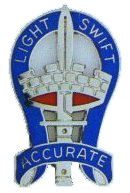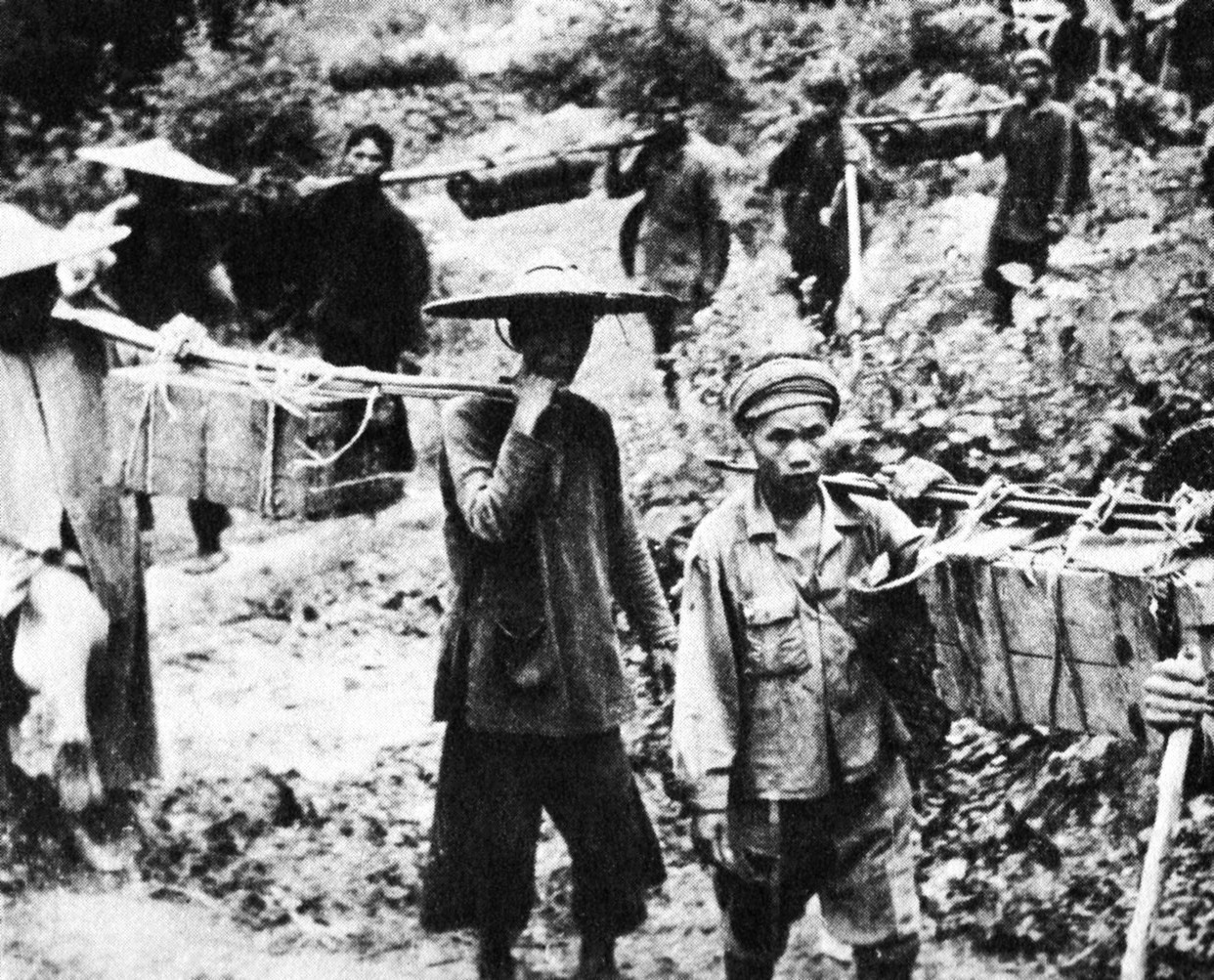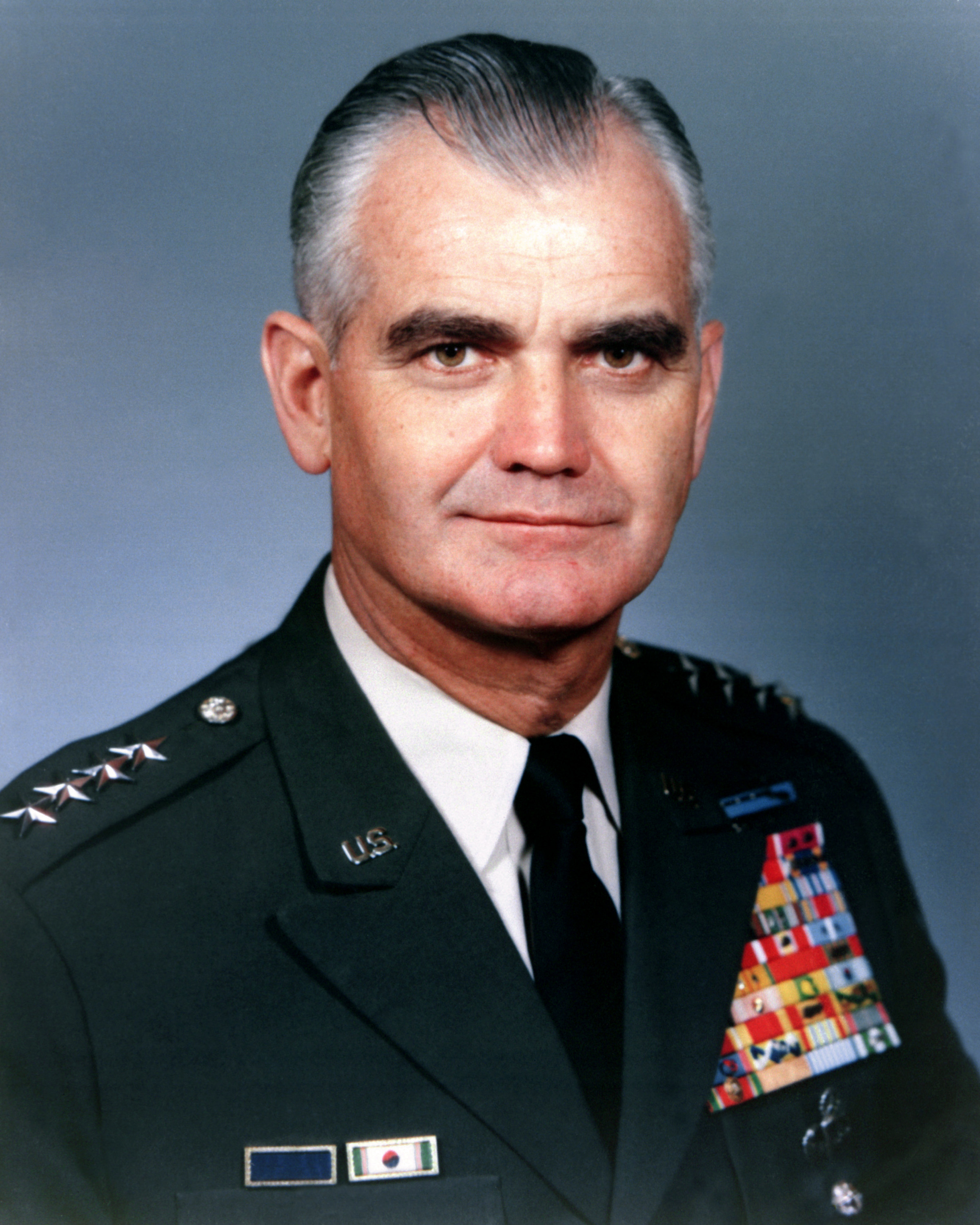|
199th Light Infantry Brigade
The 199th Infantry Brigade (Light) is a unit of the United States Army which served in the Army Reserve from 1921 to 1940, in the active army from 1966 to 1970 (serving in the Vietnam War), briefly in 1991–1992 at Fort Lewis, and from 2007 as an active army training formation at Fort Benning. Early history Constituted 24 June 1921 in the Organized Reserves as Headquarters and Headquarters Company, 199th Infantry Brigade, an element of the 100th Division. Organized in December 1921 at Huntington, West Virginia. Redesignated 23 March 1925 as Headquarters and Headquarters Company, 199th Brigade. Location changed 27 October 1931 to Parkersburg, West Virginia. Redesigned 24 August 1936 as Headquarters and Headquarters Company, 199th Infantry Brigade. Converted and Redesignated 23 February 1942 as 100th Reconnaissance Troop (less 3rd Platoon), 100th Division (Headquarters and Headquarters Company, 200th Infantry Brigade, concurrently converted and redesignated as the 3rd Platoon, ... [...More Info...] [...Related Items...] OR: [Wikipedia] [Google] [Baidu] |
Shoulder Sleeve Insignia
Shoulder sleeve insignia (SSI) are distinctive cloth patches worn on the left sleeve of the United States Army uniform just below the shoulder seam by soldiers assigned to divisions, corps, armies, and other specifically authorized organizations. They are also worn on the right sleeve by soldiers to indicate former overseas service with certain units during periods of U.S. military operations in hostile conditions (MOHC). Versions Colored Shoulder sleeve insignia were often designed with intricate designs including bright colors, when created. Because these bright colors and designs risk standing out when a soldier is in combat or in hiding, the shoulder sleeve insignia in its color form was commonly only worn on the dress uniform or service uniform when a soldier was not in combat. However, with the retirement of the Army Green Uniform in 2015, the full-color SSI was discontinued and was replaced with a CSIB (combat subdued identification badge). For combat unifor ... [...More Info...] [...Related Items...] OR: [Wikipedia] [Google] [Baidu] |
Sông Bé Base Camp
Sông Bé Base Camp (also known as Sông Bé Airfield, Farley Field or Landing Zone Buttons) is a former U.S. Army and Army of the Republic of Vietnam base southwest of Phước Bình in southern Vietnam. History The base was originally established in April 1965 as a 5th Special Forces Detachment B-34 base and was located approximately 2 km southwest of Phước Bình in Phước Long Province. The Battle of Song Be was fought around the base in May 1965. On 10 April 1966 the 173rd Airborne Brigade moved to Sông Bé for Operation Denver and remained there until the end of April. The 199th Light Infantry Brigade was based at Sông Bé from December 1966 to February 1967. The 1st Brigade, 1st Infantry Division comprising: * 1st Battalion, 2nd Infantry Regiment *1st Battalion, 26th Infantry Regiment * 1st Battalion, 28th Infantry Regiment was based at Sông Bé from May until June 1969. The 1st Brigade, 101st Airborne Division was based at Sông Bé in January 1968 ... [...More Info...] [...Related Items...] OR: [Wikipedia] [Google] [Baidu] |
Iron Triangle (Vietnam)
The Iron Triangle ( Vietnamese:'' Tam Giác Sắt'') was a area in the Bình Dương Province of Vietnam, so named due to it being a stronghold of Viet Minh activity during the war. The region was under control of the Viet Minh throughout the French war in Vietnam and continued to be so throughout the phase of American involvement in the Vietnam War, despite concerted efforts on the part of US and South Vietnamese forces to destabilize the region as a power base for their enemy, the communist North Vietnamese–sponsored and–directed South Vietnamese insurgent movement, the Viet Cong (VC). Geography The location of the Iron Triangle was between the Saigon River on the west and the Tinh River on the east and bordering Route 13 about north of Saigon Ho Chi Minh City (HCMC) ('','' TP.HCM; ), commonly known as Saigon (; ), is the most populous city in Vietnam with a population of around 14 million in 2025. The city's geography is defined by rivers and canals, of ... [...More Info...] [...Related Items...] OR: [Wikipedia] [Google] [Baidu] |
Urban Warfare
Urban warfare is warfare in urban areas such as towns and cities. Urban combat differs from combat in the open at both Military operation, operational and the Military tactics, tactical levels. Complicating factors in urban warfare include the presence of civilians and the complexity of the urban terrain. Urban combat operations may be conducted to capitalize on strategic or tactical advantages associated with the possession or the control of a particular urban area or to deny these advantages to the enemy. It is considered to be arguably the most difficult form of warfare. Fighting in urban areas negates the advantages that one side may have over the other in armor, heavy artillery, or air support. Ambushes laid down by small groups of soldiers with handheld anti-tank weapons can destroy entire columns of modern armor (as in the Battle of Grozny (1994–95), First Battle of Grozny), while artillery and air support can be severely reduced if the "superior" party wants to limit ci ... [...More Info...] [...Related Items...] OR: [Wikipedia] [Google] [Baidu] |
Saigon
Ho Chi Minh City (HCMC) ('','' TP.HCM; ), commonly known as Saigon (; ), is the most populous city in Vietnam with a population of around 14 million in 2025. The city's geography is defined by rivers and canals, of which the largest is Saigon River. As a Municipalities of Vietnam, municipality, Ho Chi Minh City consists of 16 List of urban districts of Vietnam, urban districts, five Huyện, rural districts, and one Municipal city (Vietnam), municipal city (sub-city). As the largest financial centre in Vietnam, Ho Chi Minh City has the largest gross regional domestic product out of all Vietnam provinces and municipalities, contributing around a quarter of the Economy of Vietnam, country's total GDP. Ho Chi Minh City metropolitan area, Ho Chi Minh City's metropolitan area is List of ASEAN country subdivisions by GDP, ASEAN's 5th largest economy, also the biggest outside an ASEAN country capital. The area was initially part of Cambodian states until it became part of the Vietna ... [...More Info...] [...Related Items...] OR: [Wikipedia] [Google] [Baidu] |
Vietcong
The Viet Cong (VC) was an epithet and umbrella term to refer to the Communism, communist-driven armed movement and united front organization in South Vietnam. It was formally organized as and led by the National Liberation Front of South Vietnam, and conducted military operations under the name of the Liberation Army of South Vietnam (LASV). The movement fought under the direction of North Vietnam against the South Vietnamese and United States governments during the Vietnam War. The organization had both guerrilla warfare, guerrilla and regular army units, as well as a network of Professional revolutionaries, cadres who organized and mobilized peasants in the territory the VC controlled. During the war, communist fighters and some Anti-war movement, anti-war activists claimed that the VC was an insurgency indigenous to the South that represented the legitimate rights of people in South Vietnam, while the U.S. and South Vietnamese governments portrayed the group as a tool of N ... [...More Info...] [...Related Items...] OR: [Wikipedia] [Google] [Baidu] |
Long Binh Post
Long Binh Post (''Tổng kho Long Bình'') is a former U.S. Army base located in Long Bình, Đồng Nai between Biên Hòa and Saigon, Vietnam. The base functioned as a U.S. Army base, logistics center, and major command headquarters for United States Army Vietnam (USARV). Long Binh Post was also unofficially known as "Long Binh Junction", influenced by the widely used initials of then-President Lyndon B. Johnson. History Long Binh Post was located on the east of Đồng Nai river, 20 km northeast from Saigon and 7 km southeast from Biên Hòa Air Base. With the buildup of U.S. forces in South Vietnam, it was recognized that the continued influx of troops into Saigon would soon exceed its capability to absorb them and that usable real estate and facilities were not available in the Saigon area. The 1st Logistical Command was tasked with developing a short range plan to absorb the influx of troops, and a long range plan that would ultimately move the bulk of ... [...More Info...] [...Related Items...] OR: [Wikipedia] [Google] [Baidu] |
II Field Force
II Field Force, Vietnam was a United States Army Corps-level command during the Vietnam War. Activated on 15 March 1966, it became the largest corps command in Vietnam and one of the largest in Army history. II Field Force was assigned the lineage of the XXII Corps, a World War II corps in the European Theater of Operations. II Field Force was a component of U.S. Military Assistance Command Vietnam (MACV) and had its headquarters in Long Binh. Area of responsibility II Field Force's area of responsibility was III Corps Tactical Zone, later renamed Military Region 3, which comprised eleven provinces surrounding Saigon. This was designed to mimic the ARVN III Corps region. II Field Force controlled units participating in the 1968 Tet Offensive and the 1970 Cambodian Incursion. Units assigned At various times during the Vietnam War, II FFV controlled the following units: * 1st Infantry Division * 9th Infantry Division * 25th Infantry Division *101st Airborne Division *1st C ... [...More Info...] [...Related Items...] OR: [Wikipedia] [Google] [Baidu] |
Tet Offensive
The Tet Offensive was a major escalation and one of the largest military campaigns of the Vietnam War. The Viet Cong (VC) and North Vietnamese People's Army of Vietnam (PAVN) launched a surprise attack on 30 January 1968 against the forces of the South Vietnamese Army of the Republic of Vietnam (ARVN), the United States Armed Forces and their allies. It was a campaign of surprise attacks against military and civilian command and control centers throughout South Vietnam. The name is the truncated version of the Lunar New Year festival name in Vietnamese, Tết Nguyên Đán, with the offense chosen during a holiday period as most ARVN personnel were on leave. The purpose of the wide-scale offensive by the Hanoi Politburo was to trigger political instability in a belief that mass armed assault on urban centers would trigger defections and rebellions. The offensive was launched prematurely in the early morning hours of 30 January in large parts of the I and II Corps Tactical Z ... [...More Info...] [...Related Items...] OR: [Wikipedia] [Google] [Baidu] |







